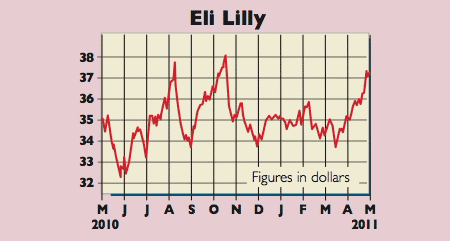
Wall Street used to love Big Pharma. In the late 1990s, stocks in the sector often traded on earnings per share (EPS) multiples of around 20. But not anymore. The US healthcare sector is trading on 2011 p/e (price/earnings) ratios of below 12. This seems odd, given that, for the next two years, profits are expected to rise on average by 10% a year.
So why has pharma fallen out of favour? It’s partly due to US president Barack Obama’s health reforms and the threat from cheaper generic drugs as patents expire. Also, tighter regulation means it’s becoming harder and dearer to launch new treatments. And while total spending on the sector has climbed, governments, hospitals and patients are reaching the limit of what they can afford to pay.
But the dramatic sell-off looks overdone. The fundamentals of ageing populations and greater demand from emerging markets remain intact. China, for example, faces a demographic timebomb from 2030, thanks to its one-child policy. And if you’re worried about inflation, Big Pharma looks a good bet. The industry doles out hefty yields, isn’t especially vulnerable to soaring commodity prices, and enjoys decent pricing power – in other words, cost increases tend to get passed on to users, leaving margins unscathed.
Take Eli Lilly, a $40bn business that focuses on the treatment of mental illness, cancer and diabetes. In the first quarter of this year, sales were up 6%, boosted by China. The board expects underlying EPS to come in at $4.15-$4.30 on flattish revenues. That puts the stock on a rating of below nine times earnings, while paying a 5% dividend yield.
Eli Lilly (NYSE: LLY), rated a BUY by BMO Capitla Markets
The next few years could be tough. Lilly is approaching a series of patent expiries relating to four of its blockbusters. In total, these account for around half of the group’s turnover. Its schizophrenia medicine Zyprexa loses protection in October, followed by Cymbalta (anti-depressant) and Humalog (for diabetes) in 2013 and finally Evista (breast cancer) in 2014.
But all is not lost. European regulators recently approved Bydureon, a diabetes drug Lilly has co-developed with Amylin Pharmaceuticals and Alkermes. And the group is on track to refill its pipeline with ten promising compounds in late-stage clinical trials by December. So over the next four years, new product launches should offset much of the ‘patent cliff’ problem. And adding these to its other products, total sales and underlying EPS should come in at around $21bn and $4 respectively in 2014. Thereafter profits should accelerate by double digits again.
I’d rate the stock on 15 times EPS. Discounting back at 10% a year gives you an intrinsic worth of $42 per share. And given that the sector is consolidating, I wouldn’t be surprised if a larger rival came knocking at these levels. The synergies of combining sales forces, research and development, and distribution systems could add another $10 a share to the price. Of course, there’s a currency risk in buying non-UK shares. But overall, Lilly looks a reliable income play. First-half figures are due 21 July. BMO Capital has a target price of $43.
Recommendation: BUY at 437.20